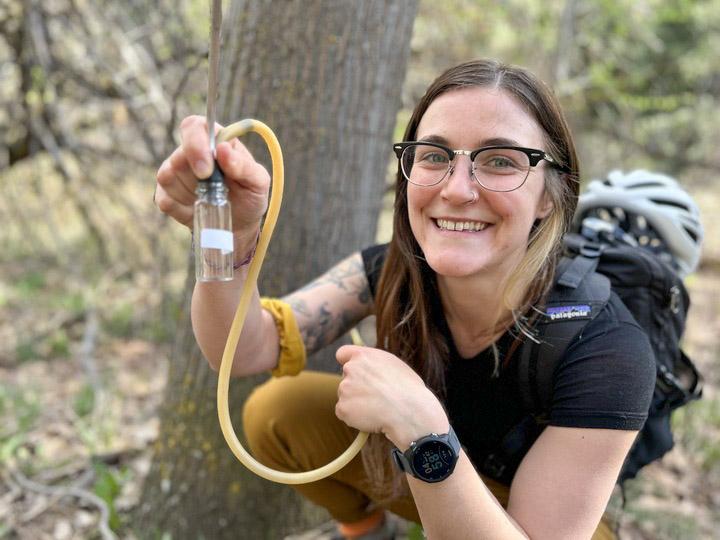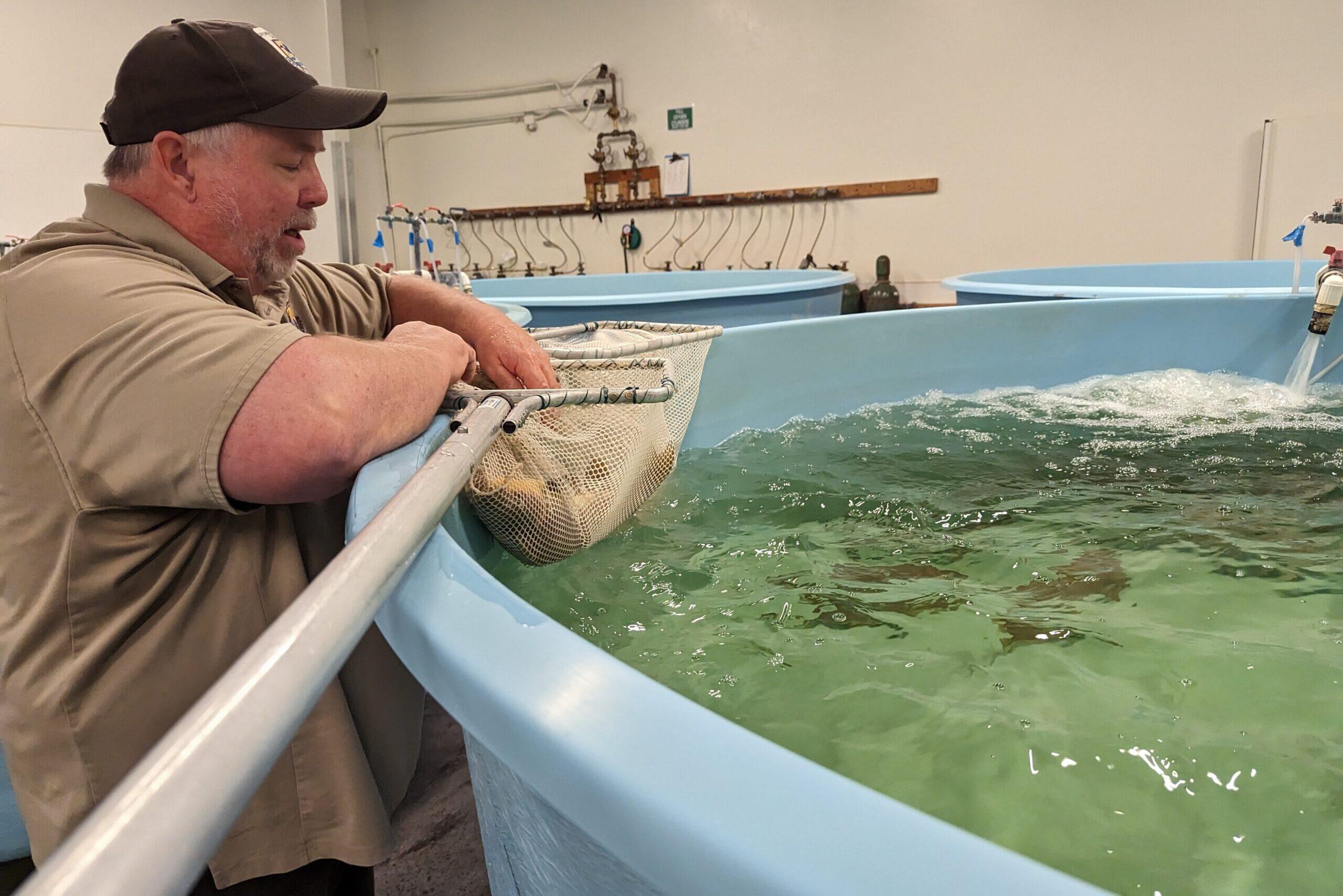
A popular federal effort to protect threatened Western fish is in murky waters as stakeholders await Congressional action on reauthorization.
The Upper Colorado River Endangered Fish Recovery Program has for 30 years sought to restore four species that once thrived in the river: the razorback sucker, Colorado pikeminnow, bonytail and humpback chub. A sister effort, the San Juan River Basin Recovery Implementation Program, works to restore the same fish in the Four Corners region.
The species are imperiled by human-wrought habitat disruption, like dams, and preyed upon and out-competed by introduced species like rainbow and brown trout.
But these conservation efforts have made a noticeable difference — the humpback chub has already been delisted from endangered to threatened and the razorback sucker has been nominated for the same consideration.
“When I started 30-plus years ago, I had never seen a razorback sucker. It took four years before I saw one out of the wild. That's how rare they were,” Dale Ryden, project leader for the U.S. Fish and Wildlife Office in Grand Junction, said. “Now I can go out and in a typical day of sampling, we might get anywhere from 20 to a couple hundred razorback suckers just within the valley here.”
Ryden helps manage a hatchery outside of Grand Junction that raises bonytails and razorback suckers — about 20,000 at any given time. It’s a small piece of a program that spans several states, tribes and water users.
In addition to hatcheries, the Upper Colorado River program builds fish passages that allow species to circumnavigate irrigation infrastructure, helps to boost stream flows in low-water times and works to remove the scores of non-native fish. All without ever turning to the courts to protect the species.
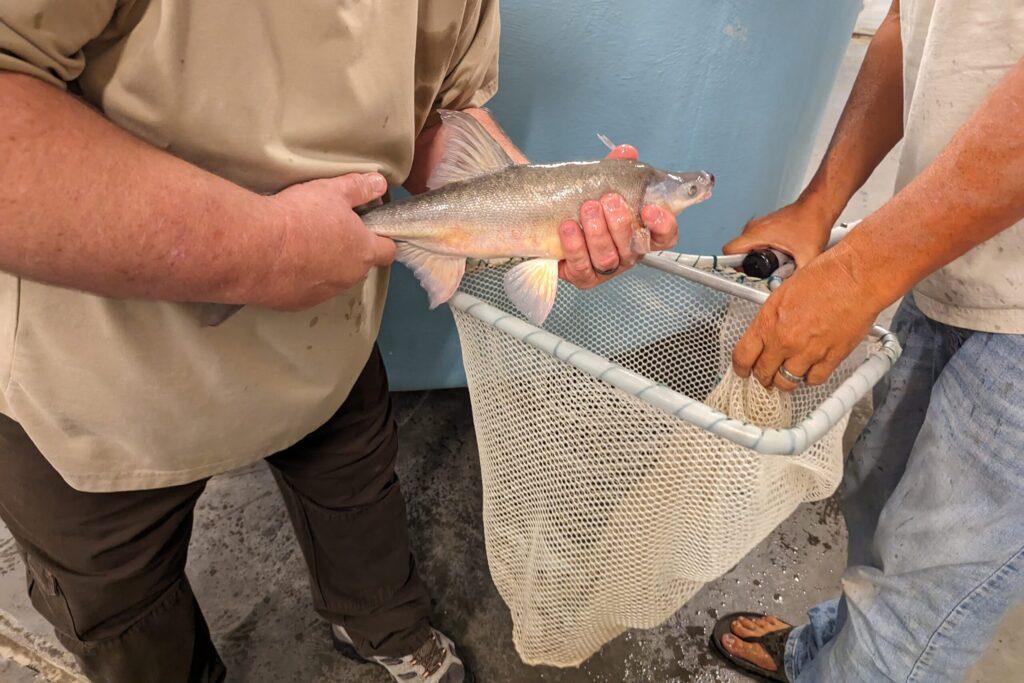
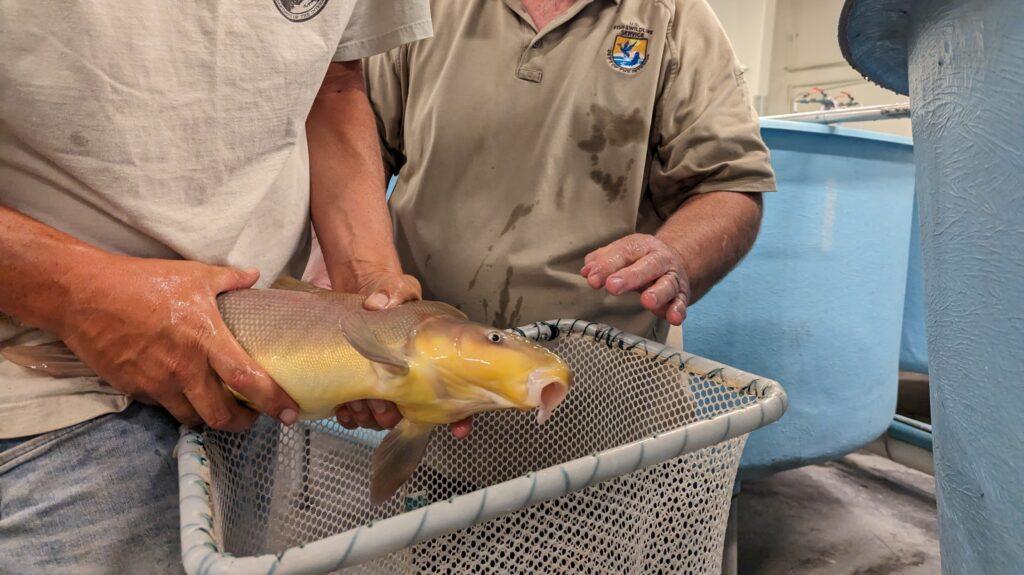
Thirty years in, the program is considered popular among the parties involved. But it took time to get here, Ryden said, adding that when the program was just hatching, the relationships between users was “less fun than they are now.”
“The lucky thing for me was in those early days, I was a biological technician, so I was out catching the fish. I didn't have to sit through the contentious meetings and things, but again,” he said. “I don't think anybody was disingenuous. They were all just trying to do their job and get the water they needed. But over time there's been a lot of really good partnering — just a lot of give and take — and the folks are all really willing to work together and that's what makes this all work.”
While the program has already delivered results — particularly with the humpback chub and razorback sucker — those involved said it needs a lot more time if all four species are going to thrive again. That’s partly because these fish can live for decades and therefore need a long runway to reestablish themselves in their native habitat.
“The thing that people forget is that these are really long-lived fishes,” Ryden said. “We may have only had three or four generations of those fish in my entire career. Building hatcheries, going out and doing the right management actions. All that takes time.”
Stakeholders have reached agreement, now Congress must act
Time, however, is now the issue. Strong support on the ground has not eased the path to continued support in Washington, D.C., where Congress needs to both reauthorize and fund the programs if these efforts are to continue.
It’s a case Colorado Sen. John Hickenlooper has been pressing on Capitol Hill this year.
“If you look at cost/benefit,” said Hickenlooper, a Democrat, “I think we can demonstrate significant benefits relative to the cost.”
He and Republican Sen. Mitt Romney of Utah are carrying a bill to reauthorize the program. Their plan calls for $92 million for the Bureau of Reclamation for its share of the costs of the program and $50 million for capital projects over the next seven years.
“I just really want to get this done,” Hickenlooper said.
On the House side, though, two members of the Colorado delegation have introduced competing bills, raising the question of which version may move forward.
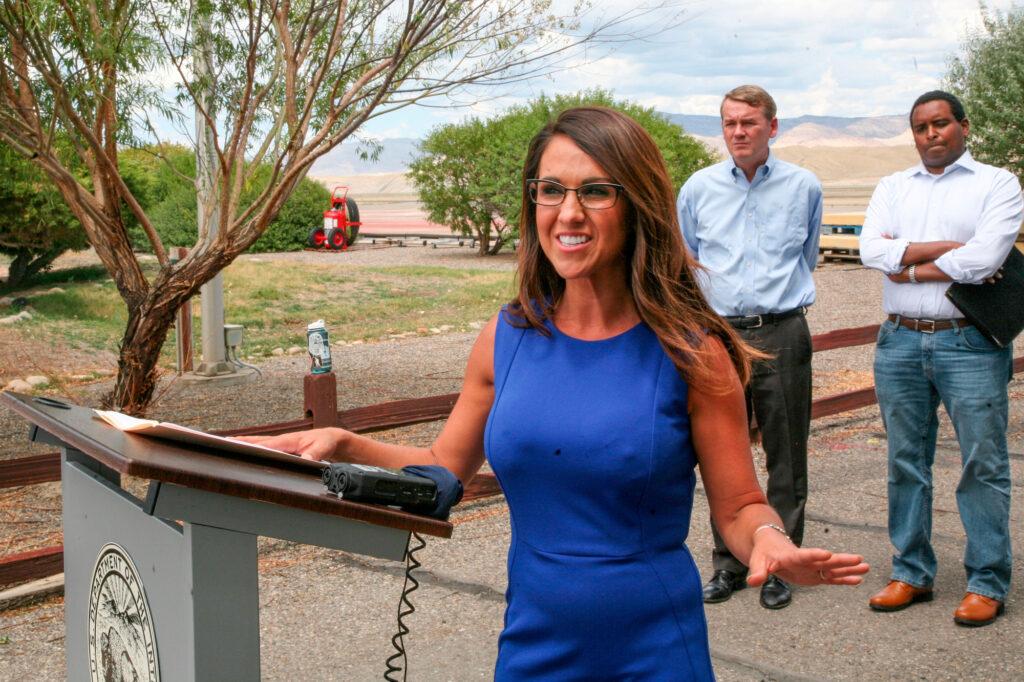
Democratic Congressman Joe Neguse is the lone sponsor of a bill with the same funding levels and timeframe as the Senate bill.
Across the aisle, Republican Congresswoman Lauren Boebert has a bill with only Republican cosponsors that has the same $50 million for capital projects as the Senate version but holds the cost share portion flat, at $80 million dollars.
At a hearing on her bill, Boebert described it as a clean reauthorization, “by extending conservation programs at current funding levels for seven additional fiscal years.”
“Additional funding would not pass the House and our GOP majority,” she said.
In an interview with CPR News, Boebert would not commit to supporting the Senate’s higher price tag if it came to the House, again stressing it would not pass her fellow Republicans.
“I want this to pass the House and be signed into law. So, I'm doing what I can to ensure that this reauthorization actually takes place, and these are the funding levels that will pass the House,” she said.
She added that a number of stakeholders on the ground in the West support her bill.
Neguse is pushing for a hearing on his bill with the higher funding number. He said the message he’s gotten from local participants in the river program is that “more funding is needed to ensure that this program operates successfully.”
And he’s not just worried about the lower number in Boebert’s bill, but how the Republican majority is approaching spending more broadly.
“It is ironic, and in my view, hypocritical to seek to reauthorize a program — because of course, that's what we're talking about in this instance — while simultaneously seeking to defund it on the appropriation side,” Neguse added.
Lawmakers can pass a bill reauthorizing a program with a certain amount of funding, but what really matters is how much money Congress appropriates overall each year. The Republican-controlled House’s proposed budget for the Interior Department is $13 billion less than the last fiscal year, which could force the Department to make steep cuts to fish recovery and many other programs.
‘My fingers are always crossed’
Back in Colorado, Doug Kemper with the Colorado Water Congress is all too familiar with reauthorization and the fight for funding.
“Anytime you're dealing with Congress, my fingers are always crossed,” he quipped, “on asking them to do anything.”
He said he can live with current funding levels. But he does worry about what happens if the number goes lower. “Certainly, this is what we need for the program, and if that money turns out is not available, then you know, that's a whole other set of negotiations,” he said.
The stakeholders on the ground are already looking at less funding for their efforts, due to a drop in revenue from hydroelectric power along the Colorado River. That jolt led to an additional year of negotiations over reauthorization and a one year stop gap funding bill that Hickenlooper and Neguse spearheaded last Congress (Boebert also supported it). Additionally, like everyone else, stakeholders have also been impacted by higher inflation and want to ensure their next round of funding takes that into account.
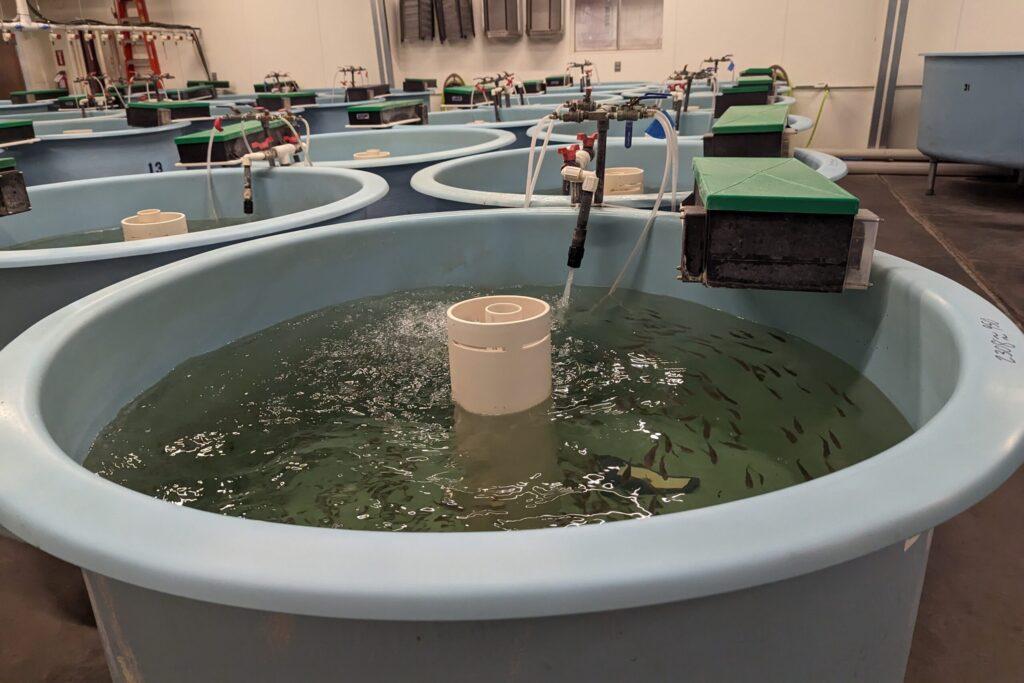
Joe Trungale with the Nature Conservancy added progress is still progress, when it comes to saving these fish, even if it has to go slower due to lack of funds. But he also noted that while the money may be up in the air, the pressures on these rivers are significant, and increasing.
“The threats that we're facing due to changing climate and increasing demand are going to continue to accelerate,” he said. “So it's going to continue to be harder. It's not like we feel like we can take the foot off the gas now.”
When pressed, none of the people working on the ground would say which bill they preferred, instead insisting they’re just happy to have bipartisan support for the programs in both chambers. When it comes to funding levels, they’re hoping for the best, but also resigned to the worst.
Hickenlooper, a self-described optimist, sees a path for the reauthorization language to get through this year, most likely by getting slipped into one of the many must-pass pieces of legislation that await Congress when it returns this week, be it the Farm Bill or a budget bill.
But which funding number finally wins out will be a test of lawmakers ability and — to a degree their influence — to sway a divided Congress that has taken starkly different positions when it comes to government spending.



